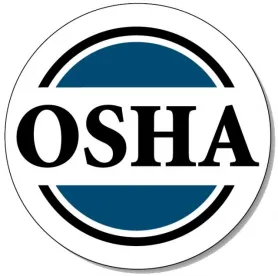On November 5, 2021, the U.S. Occupational Safety and Health Administration published its anticipated emergency temporary standard on COVID-19 Vaccination and Testing (the “ETS”). Citing the “grave danger” posed by the virus to unvaccinated employees in the workplace, the headline-grabbing core of the ETS is the requirement that covered employers must implement and enforce a policy that mandates that employees be fully vaccinated against COVID-19 by January 4, 2022 or to submit to weekly COVID-19 testing and wear a mask.
As expected, the ETS is currently the subject of numerous legal challenges, and a federal court of appeals has—for now—issued an order preventing the ETS from being enforced until the legal challenges are settled.
Executive Summary
The ETS is one of a number of recent Biden Administration efforts to pull the levers of government to require vaccination in the U.S., and builds upon vaccine mandates applicable to federal employees, federal contractors, and health care and other recipients of Medicare/Medicaid funding.
The ETS applies to private sector employers with more than 100 employees (including full and part-time employees), and state and local government employers in the 22 states with OSHA-approved State Plans. OSHA estimates the ETS will cover nearly 85 million workers. Small businesses with less than 100 employees are not covered by the rule, although OSHA states that it will consider in the future whether smaller businesses should also subject to a vaccine mandate.
In addition to the “vaccination or testing” mandate, the ETS imposes a significant number of new documentation, reporting, and paid leave rules on employers while the ETS remains in effect. The following is a summary of employers’ key obligations:
-
Develop a written policy mandating that employees either be fully vaccinated, or be subject to weekly COVID-19 testing and wear a mask at work, with few exceptions.
-
Determine the vaccination status of all workers by obtaining acceptable documentation of proof of vaccination (e.g., a vaccination card), and maintain a roster of the vaccination status of all employees.
-
Implement and begin enforcing the “vaccination or testing” mandate by January 4, 2021 (unless the nationwide stay remains in effect).
-
Fully remote workers, employees who work exclusively outside, and workers who not work in a location where others are present, do not have to be covered under the “vaccination or testing” policy.
-
Provide up to 4 hours of paid time for employees to receive the vaccination, and provide “reasonable” paid sick leave to recover from any side effects from the vaccine. (Employers may allow employees to use vacation or PTO for these purposes.)
-
Exclude employees from the workplace immediately in the event of a positive COVID-19 test or diagnosis.
-
Provide employees with certain information, including what the ETS requires of employers, the company’s policy, information about vaccine safety and efficacy (through an OSHA-approved notice prepared by the CDC), and information about the criminal penalties for fraudulent statements and documentation.
-
Report work-related deaths due to COVID-19 to OSHA within 8 hours, and work-related hospitalizations within 24 hours.
OSHA is authorized to issue citations, and the penalties for noncompliance under the be severe: $13,653 per violation, and up to $136,532 for willful or repeated violations.
The ETS is to remain in effect for six months, at which time it must be replaced with a final standard. However, OSHA states that it will continue to monitor the pandemic, and will act to update the ETS if it finds the grave danger of the virus no longer exists or if new information indicates a change in the rule. In addition, under federal law, the public and businesses are entitled to submit comments to OSHA on the ETS, including on whether the ETS should become the final standard.
Deadlines for Compliance – Temporarily Paused by the Federal Courts.
The ETS states that it is to take effect immediately, i.e., when it was issued on November 5, 2021. The ETS requires compliance with all of the above provisions by December 5, 2021 except for the actual implementation of the “vaccination or testing” policy. Under the rule, employers must apply and enforce the “vaccination or testing” policy beginning on January 4, 2022.
However, numerous legal challenges to the ETS were filed in federal courts across the country on the same day it was issued. In one of those challenges, the U.S. Court of Appeals for the Fifth Circuit issued a nationwide “stay” on November 6, which is a court order preventing the ETS from going into effect until the challenge is resolved in court.
So, is the ETS the law or not?
The “legal” answer is that as of today, the ETS has been stayed by the Fifth Circuit and cannot be enforced anywhere in the country. If that stay is lifted, or if the ETS is ultimately upheld, then the ETS will be in effect and can be enforced by OSHA. While those legal challenges work their way through the courts over the comings weeks or months, it is essential for covered employers to keep a close watch on those proceedings.
The practical answer is more complicated and puts employers in a tough position. The ETS has enough complexities and requires the creation of enough policies and procedures that it cannot be implemented without advance planning in large organizations. This is particularly so for businesses that need to determine the vaccination status of a large number of employees and/or address the logistical challenges necessary in order to have an effective weekly testing program. Perhaps most significantly, the penalties that can be imposed by OSHA for noncompliance can be substantial.
For these reasons, a wait-and-see approach is probably not prudent for many, if not most, employers. This means that, at a minimum, employers should take the necessary steps to gather the required information and create the required policies and procedures so that they are prepared to implement them once the legal challenges are decided.
Planning Ahead: What do businesses need to do to prepare?
Given the uncertainties of the status of the ETS in the courts and the potentially short timeframe in which compliance may be required, we recommend employers take steps now to assess their situation and be prepared to comply if and when the ETS becomes effective.
-
Determine if your company or state or local government employer is covered by the ETS. Whether a company meets the 100-employee threshold is not always a straightforward analysis, such as when a group of separate but related companies are under common management, or in the franchise context. In close cases, legal guidance is recommended before concluding the ETS does not apply.
-
Determine the vaccination status of your workforce. In addition to the fact the ETS will require companies to maintain a roster of employees and their status, companies need time to get the required information/documentation from employees (which experience teaches can take some diligent effort by HR), and to understand what the practical considerations related to their policy will be, such as how many employees may need to be tested, who can work remotely, etc.
-
If weekly testing is going to be needed, begin planning on how to accomplish that testing. For many employers, getting testing done properly and in a timely manner (whether onsite or offsite) has proven quite challenging during the pandemic. When/if the ETS goes into effect, you can expect significant demand that may limit the ability of employers and employees to arrange for approved testing (the ETS has specific requirements on the types of tests that are acceptable, and requires that any over-the-counter test kit results be observed by the employer or a provider).
-
Prepare a compliant “vaccination or testing” policy. OSHA offers a policy template, but a tailored and more streamlined version may be a better answer for many employers. Your legal counsel should be consulted to ensure the policy meets all of the requirements of the ETS.
-
Prepare a communication strategy. The ETS imposes a number of requirements on employers to provide employees with certain notices and information, including information about what the ETS requires, the company’s policy, information about vaccine safety and efficacy, and information about the criminal penalties for fraudulent statements and documentation. In addition to the ETS requirements, there are also important employee relations considerations that employers may wish to address. As you no doubt have seen, vaccine mandates are controversial and employees across the nation have been vocal, both for and against mandates.
-
Prepare to process and document requests for exemptions from the vaccine mandate (or develop that process if it is not in place already). For employees who are required to be vaccinated under the ETS, the rule permits the employer to grant exemptions from vaccination to employees for whom a vaccine is medically contraindicated, for whom medical necessity requires a delay in vaccination, or those who are legally entitled to a reasonable accommodation under federal law because of a disability or sincerely held religious belief. In order to do this compliantly and in a non-discriminatory manner, exemptions must be assessed on a case-by-case basis. You should plan for how employees must request the exemption, what forms should be created to facilitate that process, what documentation is required to support the request, and who will review and decide whether the exemption should be granted.
-
Establish procedures to report work-related COVID-19 deaths and hospitalizations as required by the ETS, and to maintain the documentation required under the ETS.




 />i
/>i

